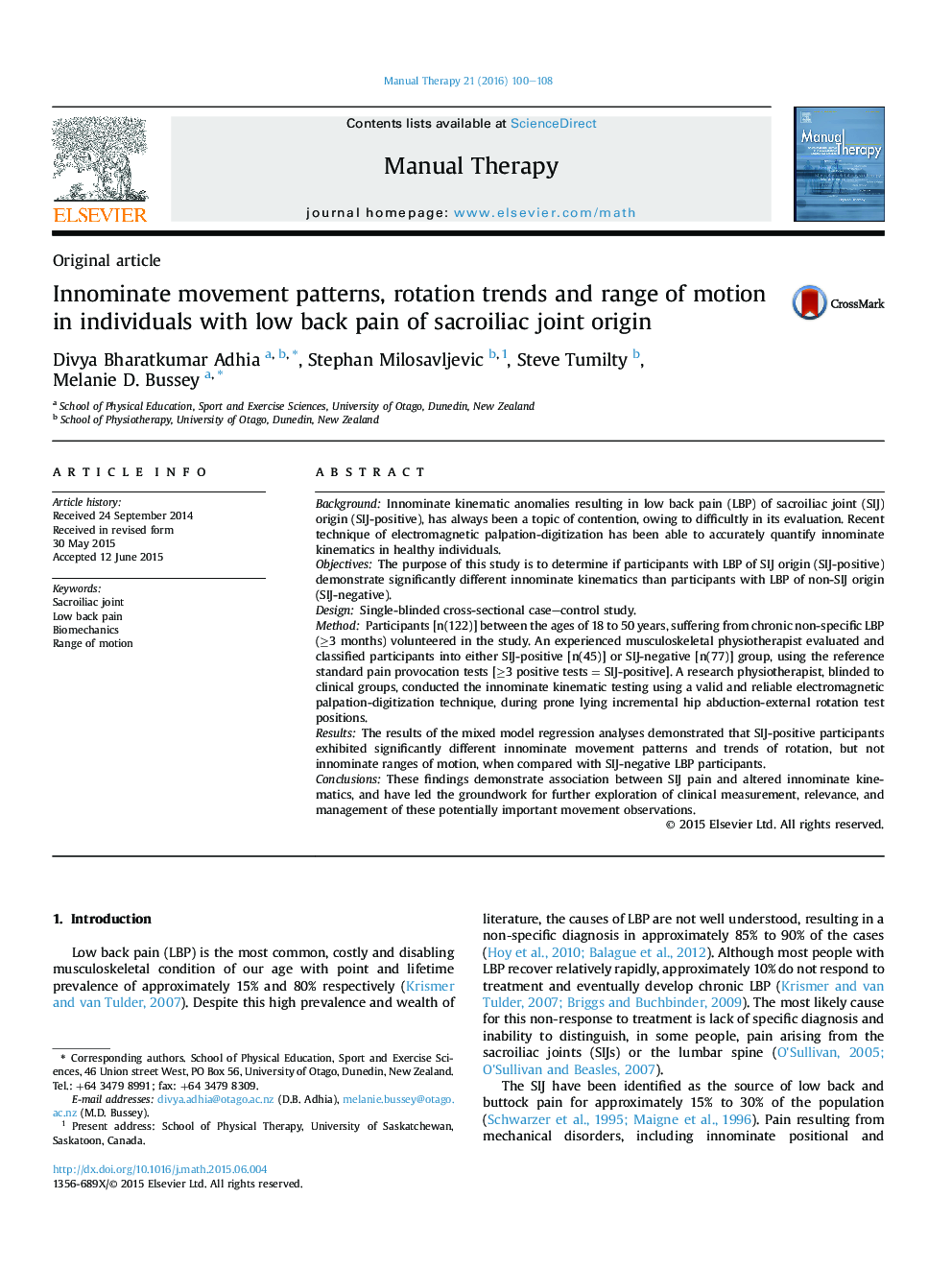| Article ID | Journal | Published Year | Pages | File Type |
|---|---|---|---|---|
| 5864591 | Manual Therapy | 2016 | 9 Pages |
â¢Innominate kinematics comparison between SIJ-positive & SIJ-negative individuals.â¢SIJ pain individuals predominantly exhibit unilateral innominate movement patterns.â¢SIJ pain individuals exhibit significantly different innominate trends of rotation.â¢No significant between-group differences in innominate ranges of motion.â¢Demonstrates association between innominate kinematic anomalies and SIJ pain.
BackgroundInnominate kinematic anomalies resulting in low back pain (LBP) of sacroiliac joint (SIJ) origin (SIJ-positive), has always been a topic of contention, owing to difficultly in its evaluation. Recent technique of electromagnetic palpation-digitization has been able to accurately quantify innominate kinematics in healthy individuals.ObjectivesThe purpose of this study is to determine if participants with LBP of SIJ origin (SIJ-positive) demonstrate significantly different innominate kinematics than participants with LBP of non-SIJ origin (SIJ-negative).DesignSingle-blinded cross-sectional case-control study.MethodParticipants [n(122)] between the ages of 18 to 50 years, suffering from chronic non-specific LBP (â¥3 months) volunteered in the study. An experienced musculoskeletal physiotherapist evaluated and classified participants into either SIJ-positive [n(45)] or SIJ-negative [n(77)] group, using the reference standard pain provocation tests [â¥3 positive tests = SIJ-positive]. A research physiotherapist, blinded to clinical groups, conducted the innominate kinematic testing using a valid and reliable electromagnetic palpation-digitization technique, during prone lying incremental hip abduction-external rotation test positions.ResultsThe results of the mixed model regression analyses demonstrated that SIJ-positive participants exhibited significantly different innominate movement patterns and trends of rotation, but not innominate ranges of motion, when compared with SIJ-negative LBP participants.ConclusionsThese findings demonstrate association between SIJ pain and altered innominate kinematics, and have led the groundwork for further exploration of clinical measurement, relevance, and management of these potentially important movement observations.
